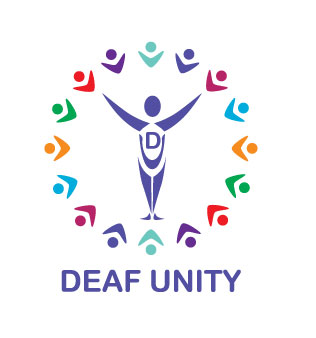“One in six people in the UK have a hearing loss – that’s 11 million potential customers.” www.actionhearingloss.org.uk
Presentations and engagement
Everyday millions of presentations are delivered globally; big decisions are made on these pitches. You may have spent weeks refining your presentation on all manner of media tools, but there are several things which can make or break your presentation.
Just as important as the content are the: presenter, delivery, body language is 90% of the presentation. In addition, audience engagement, enthusiasm, and personl style are also vital.
Regardless of whether you are dealing with a small group or a large audience every presenter needs to ensure they accommodate those with disabilities.
As someone with post lingual hearing loss [experiencing loss of hearing after learning to speak] and wearing two hearing aids I am often at my wit’s end seeing great content delivered ineffectively.
Personally, I have an arsenal of all manners of strategies, so that I can hear, learn and gain some knowledge or insight from what is being presented. Sitting at the front, seeing the presenter’s lips, turning up the volume, using an induction loop if available and lastly paying through the nose for a top-notch device with over 40 tuned audio channels. [yawn]
What is wrong with these presentations? Why are they not inclusive?
In the construction industry I see the following poor habits all the time.
- The presenter was sitting down so cannot project their voice and you cannot see them
- They have their back to the audience and, therefore, read off the slides
- Monotone pitch/tone and lack of a story
- Questions from the audience are not repeated for all to hear
- Vague descriptions of what is on a slide and complex flow diagrams and content all over the place – for ones with a visual impairment this all becomes meaningless. Keep it simple and remove the stuff not required on the slide.
Ultimately, if you cannot see or hear or understand the content of a presentation, you are disengaged, bored and restless. The mind wanders, you play with your phone, doodle and miss everything that is being said.
What makes a good presentation?
- Tell a story and take your audience on a journey
- Ensure all your audience can hear and see you
- Work the room don’t stay in one spot
Remember how story time would be at school? The voice animation, funny faces, hand gestures? As a child you were enchanted and caught up in the story! Remember how you could repeat what it was about to your friends of family and the recollection was easy?
Now ask yourself when was the last time you remembered a colleague’s pitch or presentation?
As adults we need that same level of engagement. If we are told an engaging story, it will stand out, be remembered, and provide you with the ultimate happy ending.
I recently attended an excellent session with Ginny Radmall from amplify me on pitching and presenting and the concepts of storytelling.
With just a few simple techniques, a shy presenter can be transformed into an engaged and powerful speaker. Initially, I could not hear the presenter on the first attempt and did not understand what they were trying to convey. With a few techniques, however, his voice projected to the back of the room, he was standing tall, confident, using his body to convey the message and there was no PowerPoint in sight!
It made me wonder why more people are not helping themselves and enhancing their presenting skills to engage with their entire audience fully.
These techniques outlined that there is a method to great storytelling/pitching and you CAN include people like me who are hard of hearing too. This is even more important if the person with a disability is the key decision maker. Don’t miss out on landing another great pitch by excluding the key decision maker: breathe and think before you speak.
In practical terms, face the audience, move your facial muscles (that’s what they are there for), breathe and speak from your belly not your throat. Project your voice without shouting, move your body and with time this will feel fluid and natural – just as you speak and gesticulate with friends you also want to invite the audience in and engage them.
Next time you are presenting, ask yourself if you are including those with any disability. Take the time to ensure you include your audience in your presentation. Make sure you have a story to tell: the beginning with the mythical hero, the wise man and have the happy ending. This could include your solution or whatever it is you are presenting as the hero and it will be the key to unlocking more sales.
On a more serious note, your self-improvement will definitely lead to more sales and inclusivity for those with hearing loss or visual impairment. Presentations don’t always take place in the office and this is something you need to really be aware of when meeting in a restaurant or coffee shop too.
I really enjoyed my training and would recommend all sales directors to take up this type of training for their teams – I am sure an increase in sales would be a happy ending!
Have a go at this exercise: one minute warm up.’ It really worked wonders for me – I would urge you all to give it a go for comedy value and to see how your voice changes.
————————————————————————————————————————
Fareita Udoh is an industry specialist working with suppliers and buyers across the construction industry and offers advice on corporate social responsibility strategies and disability-related training.

